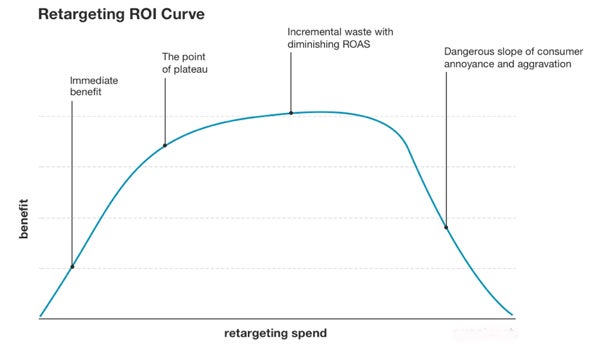 “Data-Driven Thinking” is written by members of the media community and contains fresh ideas on the digital revolution in media.
“Data-Driven Thinking” is written by members of the media community and contains fresh ideas on the digital revolution in media.
Today’s column is written by Seph Zdarko, director of data, modeling, partnerships and attribution initiatives at Quantcast.
Retargeting has been a very profitable tool for the online advertising industry, without question. Many companies built their entire businesses off it, and it is often the first foray into digital for advertisers.
On the surface, retargeting is all benefits with no downside, but is that the reality? While retargeting is easy and shows instant, positive ROI, there is a very serious danger of using it too often or implementing it poorly. The negative effects can sometimes outweigh the positive if not managed properly.
Retargeting has been around for well over a decade, but it wasn’t until the development of real-time-bidding (RTB) exchanges that it really took off. The data is free, the inventory is relatively inexpensive, it is easy to implement and it shows immediate return.
There are two main reasons for this. First, it actually works. Consumers are fickle animals, and the use of subtle reminders on their unactualized intentions is a fantastic marketing tactic.
Second, retargeting looks great because it is perfectly aligned with bottom-funnel (click or view) attribution measurement.
By its own invention, retargeting is a bottom-funnel tactic that takes full advantage of the outdated, last-touch attribution measurement still predominantly in use today. Bottom-funnel measurement aligns almost too perfectly with bottom-funnel retargeting. This is where the danger arises.
The alignment with bottom-funnel attribution measurement can create a significant bias and blind spot. Multiple vendors competing against each other with little to no oversight compound this risk. Upper-funnel prospecting, in comparison, is unlikely to oversaturate because the pool of potential consumers who may not be aware of a product or considered an offering is vast.
However, retargeting has a finite pool of consumers: those who have visited a site and can easily become oversaturated. Subtle reminders turn into annoying ads. Those annoying ads can then turn into irritation and paranoia around privacy to the point of negative regard for a product or brand.
I vividly remember my wife telling me that she was “never going to shop” at a particular online retailer again because she was so annoyed by constantly seeing its ads everywhere she went online. She asked me, “Is this your fault? This is so annoying! I am done with them!” And that was that. She hasn’t bought anything from that retailer since. What was once an ideal and loyal customer is now lost. I tried to explain to her why it wasn’t the retailer’s fault and that it was likely too many retargeting vendors competing for her last-touch attribution, but as you can probably imagine, it didn’t help.
AdExchanger Daily
Get our editors’ roundup delivered to your inbox every weekday.
Daily Roundup
How do we know when too much of a good thing goes bad? Just like it seems with every analysis in digital, there exists a classic Gaussian distribution curve of retargeting.
The immediate benefits of retargeting eventually diminish and then level out over time, lowering the overall ROAS, but then a sharp negative return can sneak in. I call it the dangerous slope of consumer annoyance and aggravation.
The problem with this lovely numberless graph is how to know when your retargeting benefit starts to plateau. Unfortunately, there is no one-size-fits-all here. Just as individual prescriptions for diet and exercise are different for different people, so are digital advertising prescriptions for businesses and products. Everything is an experiment of one.
This is where the need to leverage better measurement tools comes into play. To determine where marketers are on the retargeting ROI curve, they first need to isolate retargeting impressions before they look at the metrics. I would venture to guess that more than 20 viewable ads per day, and certainly per hour, are probably excessive. When I visit a typical retailer site with a new browser (incognito or in privacy mode) and move to completing a conversion but don’t actually convert, I can often generate more than 100 retargeting ads within a few minutes, so don’t think that 20 per hour is absurd.
How many net new daily visitors are marketers receiving, and what is the average frequency of ads marketers are retargeting them with per day? Of those who actually convert, what is the frequency of ads visitors received? Marketers may find that the average frequency per visitor versus per converter is very different as a whole, and even more different per retargeting vendor.
And lastly, are marketers looking at the overlap between all their vendors that are doing retargeting? Keep in mind that just because a contract or vendor I/O says not to do retargeting doesn’t mean they aren’t doing it anyway – especially if marketers are using last-touch attribution, which incentivizes even more hidden retargeting.
The best way to measure retargeting is to split the marketing funnel into two separate phases: one that measures third-party data use in prospecting and another that clearly measures the use of first-party data for retargeting. Use a first-visit conversion ratio and the time-to-convert window for each phase to help determine the optimal marketing mix and budget allocation. Use the average retargeting frequency per converter to set guidelines. Only through proper measurement can marketers be sure to avoid the retargeting slope of consumer aggravation.
The bottom line is marketers should absolutely do retargeting. It is a no-brainer. But they shouldn’t do it blindly to the point of consumer detriment. Use measurement and smart retargeting. Don’t fall victim to the illusionary, never-ending ROI of retargeting with bottom-funnel attribution.
Follow Quantcast (@Quantcast) and AdExchanger (@adexchanger) on Twitter.














